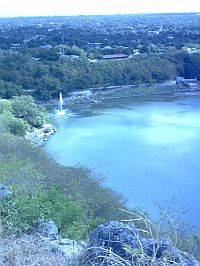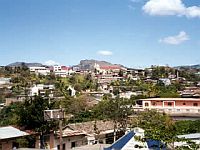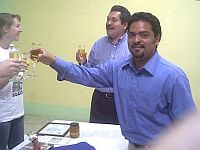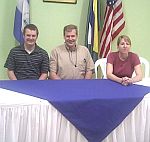|
By:
Matt Norman, Senior Staff Writer,
Michigan Tech Lode, Issue
for November 30, 2005
Michigan Tech’s
Aqua Terra Tech Enterprise group has been quietly building
up quite a track record since its establishment five years ago.
While not as high profile as some other enterprise programs, the
group is beginning to make its mark not only here at MTU but nationally
- and as of this winter, even internationally. Recently the group
won the national Haested Methods award, beating out teams from the
country’s best universities and research organizations with
their hydrologic characterization of the Silver River watershed,
located near L’Anse. With that major achievement behind them,
the Aqua Terra team is now directing its talents towards helping
others, both right here in Michigan and thousands of miles away
in rural Nicaragua. Aqua
Terra Tech Website
Aqua Terra Tech is composed of fifteen students. While the majority
come from the civil and environmental engineering department, there
are also students from geology and biology involved. The team performs
a wide range of environmental consulting functions, with the underlying
aim of discovering and developing sustainable water resource solutions.
For its first project, the team received EPA funding to create a
detailed hydrologic model of the Silver River watershed for use
by the Keweenaw Bay Indian Community. The large project, which ended
up modeling approximately 60 square miles of both ground and surface
water, involved the use of cutting-edge modeling software, as well
as a good deal of fieldwork measuring groundwater levels to test
the model’s predictions. The result, according to senior team
member Katy Bendal, was a thorough “knowledge of where water
is coming from and where it is going to” throughout the watershed
– knowledge that will be invaluable in the community’s
future water usage decisions.
The modeling work on the Silver River watershed was also the basis
for the team’s entry in the national Haested Methods competition.
Haested Methods is a leading engineering software producer which
this year put out a challenge to engineers nationwide to find the
best and most innovative use of their software. The competition
was a two phase process, starting with the submission of a proposal
detailing the team’s plans. Based on its proposal, the Aqua
Terra team was awarded the company’s software modeling package
for use on the proposed project and selected to go on to the next
stage of the competition.
Next, the group built on its previous work for the Keweenaw Bay
Indian Community, extending its modeling, which had previously dealt
only with groundwater, to cover the Silver River basin’s surface
water. The group analyzed precipitation data, soil attributes, land
use patterns, topography, stream characteristics and other parameters
needed as inputs to the model using a variety of sources and remote
techniques. After the surface water model was constructed and run,
the results were compared with those from the existing groundwater
models and historical data.
The successful project was chosen by the Haested Methods Company
as the best out of dozens of submissions, and the Aqua Terra Team
was awarded the full Haested Methods software package and license
along with technical support as well as a $2,500 scholarship.
Not content to rest on its laurels, however, the Aqua Terra Tech
enterprise team has already moved on to several ambitious new projects.
While still making use of the team’s high-tech skills and
knowledge, the current projects are aimed more at using these attributes
to make a positive difference.
The first of these new projects is aimed at creating water security
in the small Nicaraguan town of Boaco. The rural community of 34,000,
located in a country that for much of its recent past was embroiled
in conflict with U.S.-backed warlords and still bears the economic
scars, has only one well – and that well can only be relied
on to produce water five days a week. The reason, explains Bendal,
is that the ground beneath the city is composed largely of rock,
so that all of the groundwater is located in subsurface fractures..
When the water built up in a fracture is exhausted, it is necessary
to wait until the fracture refills, a process that can take days.
The solution: use the latest subsurface testing techniques to find
more fractures so that the city can drop more wells.
This December, Aqua Terra sends nine of its members to Nicaragua
for ten days. The team members will assess the terrain and the adequacy
of its current equipment, and complete as much subsurface testing
as it can. The findings will provide ample material to work on during
the following semesters. The trip is made possible by a National
Science Foundation grant that provides the team with the means to
work on the project for the next five years, with annual trips to
the project site. The Aqua Terra team hopes to complete the work
for Boaco as soon as possible however. As Bendal explains, the team
wants to accomplish similar projects in other areas facing water
problems throughout Central America. According to Bendal, plans
are in the works for projects in Guatemala and El Salvador following
the Nicaraguan project’s completion.
Aqua Terra has developed a new program that aims to get a mini-enterprise
started at Cass Technical High School in Detroit, with the ultimate
goal of increasing interest among high schoolers, especially minority
students, in the sciences and, more specifically, engineering. This
summer, students from four high schools, including Cass Tech, attended
a workshop at Michigan Tech. The workshop explored what an enterprise
is and how to start one. The students were also involved in a number
of hands-on projects including hydrologic and geophysics studies.
Currently ATT is writing and compiling a “project manual”
to send to the students of Cass Tech. The project manual will include
two primary sections: enterprise formation instructions and project
instructions. The enterprise formation instructions will contain
information on working in teams, organization, documentation, communication
and safety. It will also include examples on how to hold a meeting,
meeting minutes, meeting agendas, etc.
The proposed project for this year is a rain garden, an area of
the ground engineered to accept the runoff water from roofs, parking
lots, etc. The water that is funneled into the rain garden aids
in the recharge of local aquifers, which in turn helps divert a
portion of the community’s runoff from having to be treated
at a wastewater treatment facility. This project manual will act
as a “guide” for the students, meaning that there is
a lot of room for their own decisions, design and engineering. Members
of the enterprise visited Cass Tech over Thanksgiving break, spoke
to the classes and helped the students get started on the rain garden
project.
With recent success, the Aqua Terra Enterprise team is receiving
many opportunities for possible projects. Just now though, the team
has its hands full according to Bendal. Anyone interested in the
Enterprise or wanting information on how to get involved, should
go to the group’s Aqua
Terra Tech Website Web site.
View
Slide Show of December 2005 project trip
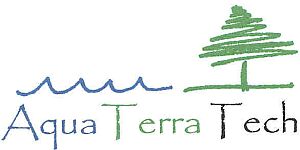
|

